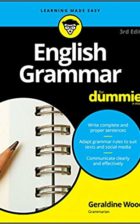Colons are used to introduce information or to expand on it further. In either case, there is always a strong connection between what follows a colon and what was written before it.
To avoid any errors in your writing, here is how to use colons correctly:
1. Listing and Elaborating
2. Capital vs. Lower-Case Letters
3. Introducing Quotes
1. Listing and Elaborating
Always use a full sentence before a colon. This is the most important rule that you need to remember.
There are only two common exceptions to this:
1) When a colon is used to separate a title from its subtitle.
2) When a colon separates numbers in a ratio.
For example, a story might be titled Stranded: The Lost Isle, or a ratio might be written as “3:1.”
An important note is that unlike the sentence before a colon, the words that come after it don’t need to be a full sentence. Even a single word can be fine.
I was told to bring the following items: a map, a compass, and a water bottle.
My sister was angry: someone had read her diary.
I knew what the feeling was at once: love.
In the first example above, the information that follows the colon is a list of items. In the second example, a full sentence is used on both sides of the colon. And in the last example, we only have a single word. Yet as you can see, all three of them follow the same rule: a full sentence is used before the colon.
For comparison, here is an incorrect example:
* I need: a bowl, a spoon, and some flour.
There are two ways to fix this type of mistake:
1) Remove the colon:
I need a bowl, a spoon, and some flour.
2) Create a full sentence before the colon:
I need the following things: a bowl, a spoon, and some flour.
In keeping to this rule, a colon is never used after the phrases “namely” or “for example.” However, it is very common for the phrase “as follows” to come before a colon:
The foreman described the schedule as follows: inspect the site, unload the truck, then get to work.
2. Capital vs. Lower-Case Letters
A common cause of confusion is whether to use a capital letter after a colon. Although styles vary, here is a general rule you can follow: if the colon introduces a list of full sentences, then follow the colon with a capital letter. If not, simply keep things lower case.
I got lost in the city: The subway was closed, so I had to walk. Then I had to take a detour down some alleys. Before long, I had no idea where I was!
Look at how all of the sentences that follow the colon expand on the one that comes before it. We begin with a general sentence, and then the colon introduces more information that is specific to the topic at hand.
3. Introducing Quotes
A colon can introduce a quote or line of dialogue. In the case of dialogue, though, a comma is far more common, especially in fiction.
Thomas said, “You lied to me!”
Thomas frowned: “You lied to me!”
The situation for introducing quotes is a little bit different. When you need to introduce material from a written source, it is preferable to use a colon.
My teacher wrote her motto on the blackboard: “In order to improve, we need to always challenge ourselves.”
However, if the quote is integrated as part of the sentence, then no extra punctuation is used:
My teacher’s motto is that for anyone “to improve, we need to always challenge ourselves.”
Since the quote simply flows as part of the sentence, it isn’t introduced by a colon or comma. The same applies to introducing a block quote (see the section on block quotes for more information). There is no need to use a colon if the wording flows together like a normal grammatical sentence:
My teacher wrote her motto on the blackboard that
In order to improve, we need to always challenge ourselves. Only by testing our limits will we get to see what we’re capable of. And even if we make mistakes or don’t achieve exactly what we wanted to, we will still accomplish more than if we had never even tried at all. That is the measure of real success.
If the wording didn’t flow together, we could write it with a colon like this:
My teacher wrote her motto on the blackboard:
In order to improve, we need to always challenge ourselves. Only by testing our limits will we get to see what we’re capable of. And even if we make mistakes or don’t achieve exactly what we wanted to, we will still accomplish more than if we had never even tried at all. That is the measure of real success.
For more help with your grammar, check out these fantastic books:








